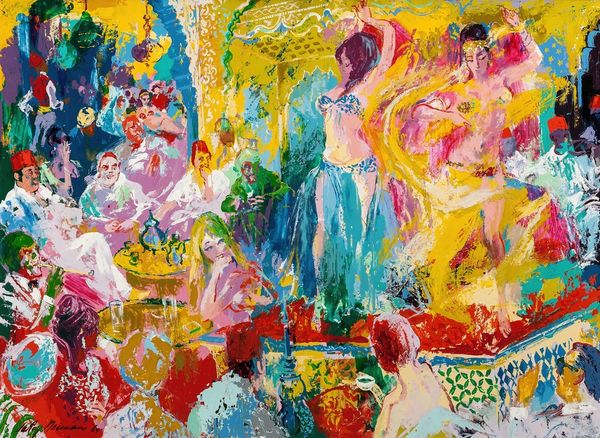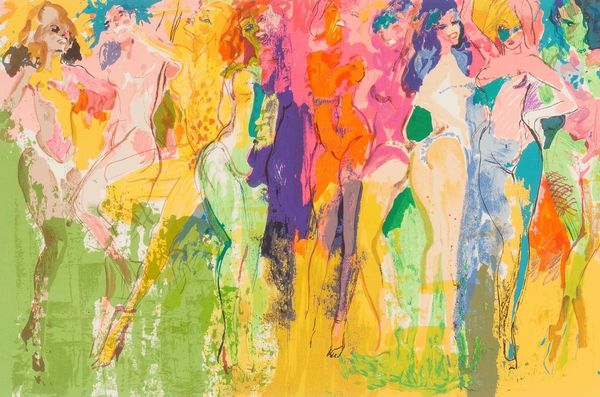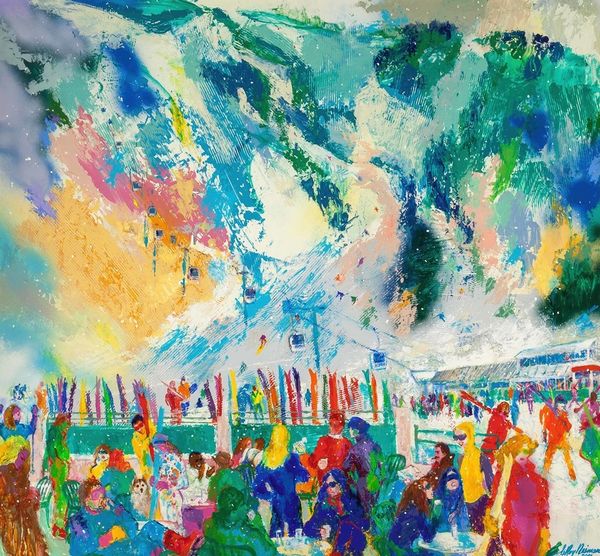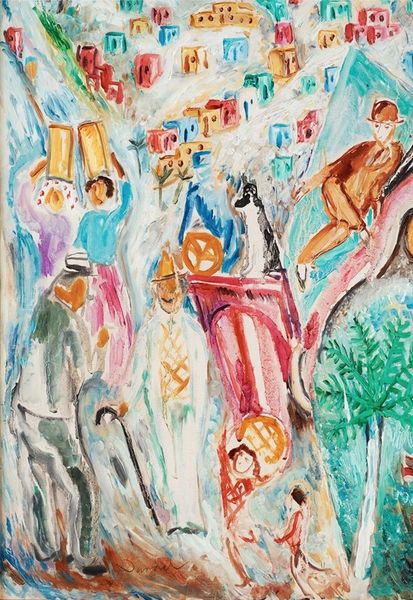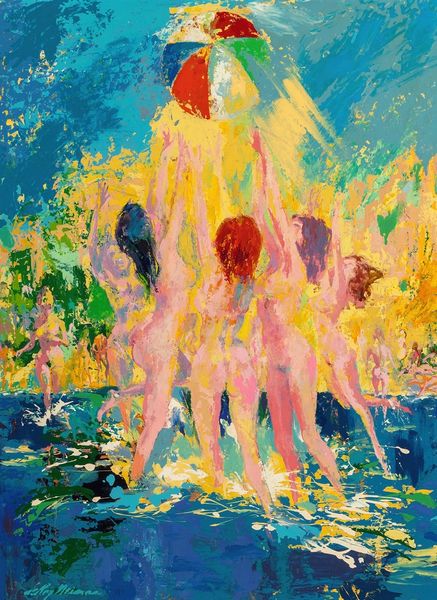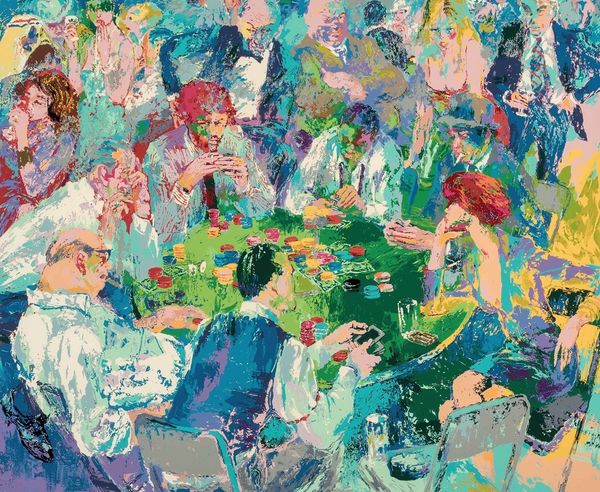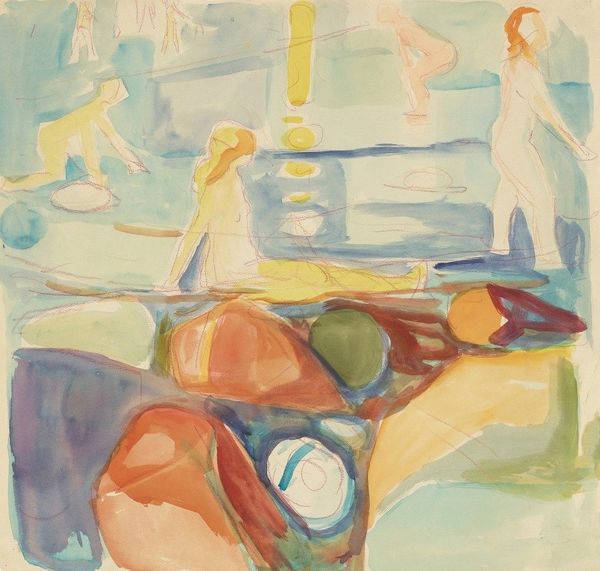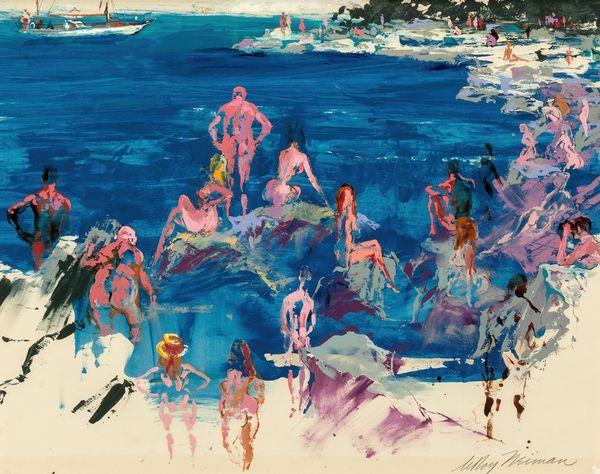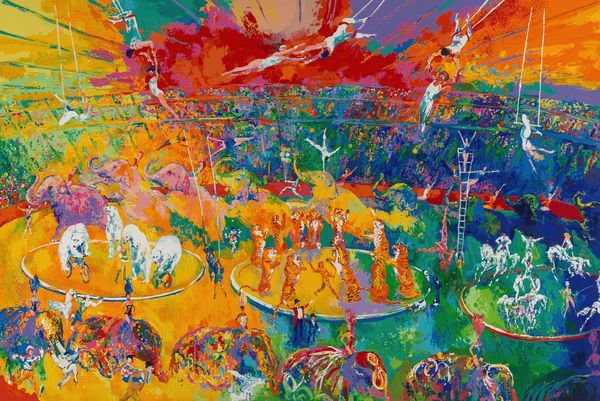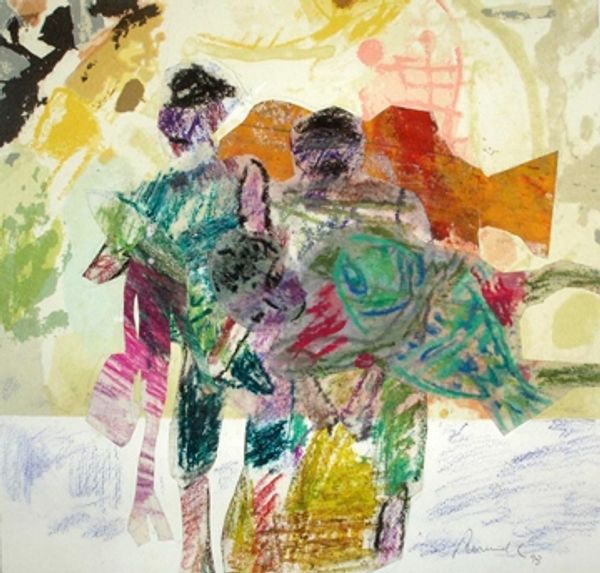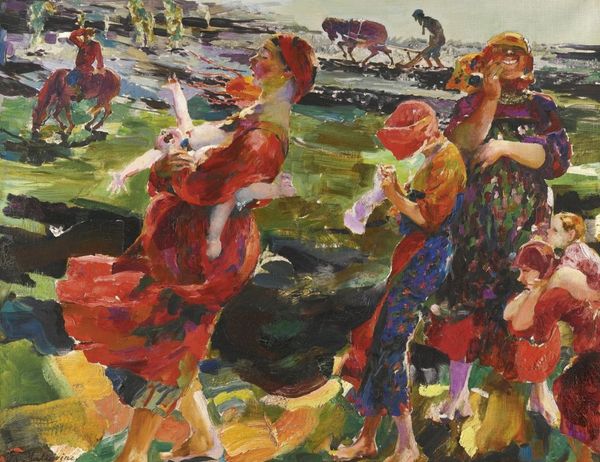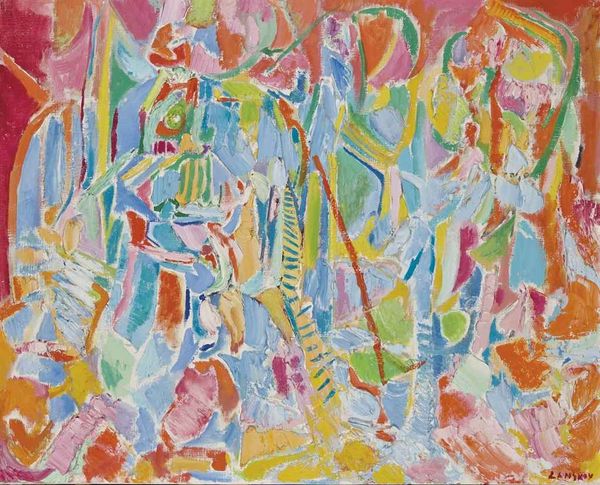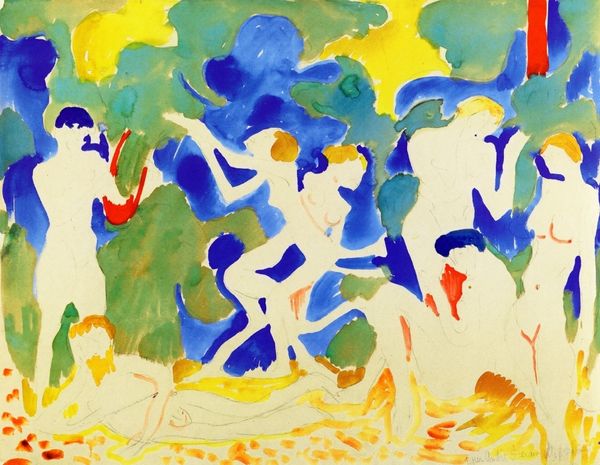
Copyright: Modern Artists: Artvee
Editor: LeRoy Neiman's "Havana Rhythm," created in 2000, bursts with such vibrant energy! The scene is alive with dancers and musicians. What's your take on this piece? Curator: This artwork offers a glimpse into the commodification of culture for the Western gaze. Neiman, known for his vibrant depictions of leisure and entertainment, often presented sanitized, exoticized versions of reality. How do you see the representation of Cuban culture here? Is it celebratory or exploitative, or somewhere in between? Editor: I see the joy and movement, but I also wonder if the focus on spectacle flattens a complex culture. I mean, where's the history? Curator: Precisely. Think about who gets to depict these scenes and for what audience. Neiman’s work was hugely popular in affluent circles, framing "Havana Rhythm" within a history of tourism and cultural consumption. The bold colors and impasto technique, reminiscent of Fauvism and even Neo-Expressionism, served to amplify the sense of spectacle, perhaps at the expense of nuance. Editor: So, the style itself plays a role in how we perceive the subject matter. Curator: Absolutely. The visual language contributes to a specific narrative, often one that reinforces existing power dynamics. Who benefits from these types of portrayals? Whose stories are not being told? Editor: That gives me a lot to think about – more than just rhythm! I see how important it is to consider the social and cultural context when looking at any piece of art. Curator: Indeed. Hopefully, understanding this enriches your appreciation of Neiman's technique, but with a deeper awareness of the politics embedded within.
Comments
No comments
Be the first to comment and join the conversation on the ultimate creative platform.
